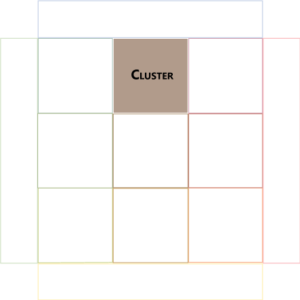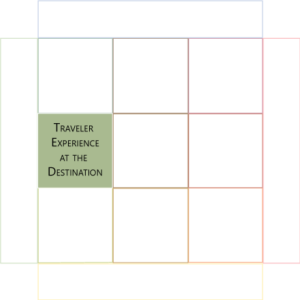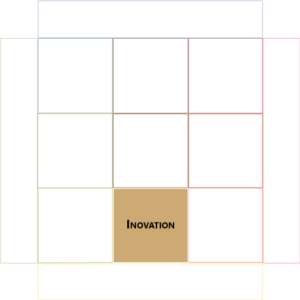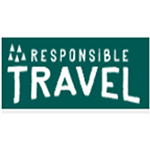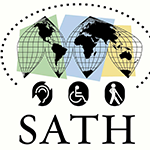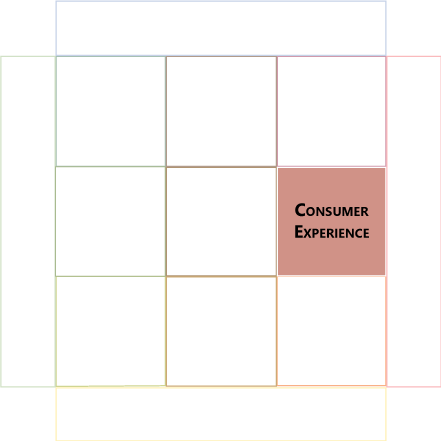
Consumer Experience: 30 Questions for Personalization of Memorable Moments and Authentic Encounters.

CONSUMER EXPERIENCE
A Comprehensive Guiding Questions to Exceeding Expectations, Personalization, and Authenticity for Lasting Impressions and Business Success
Key to Success
In this section, we would like to make sure that Small and Medium-sized Tourism Enterprises (SMTEs) should be aware of the following:
- The factors that contribute to a positive experience for travelers include the quality of accommodations, the variety of activities and attractions, and the level of traveler service.
- The role of personalization in shaping traveler experiences includes understanding how travel businesses and destinations can customize and tailor their offerings to match the preferences and interests of individual travelers and groups.
- The emotions and memories associated with travel experiences can influence future travel behavior and decision-making and how travel businesses and destinations can create experiences that are memorable and emotionally resonant for travelers.
Accomplishments
In this step, we’ll:
- Create an authentic tourist experience for interaction with travelers.
- Design authentic tourist experiences aligned and connected with the destination’s experience.
- Highlight the essential things about the consumer experience.
Time-Saving Tools
We’ll complete all sections of this chapter more quickly if we have any of the following handy:
- The tourism destination market plan and strategic plan.
- Tourism road maps offered by the tourism destination
- Cluster’s marketing plan and strategic plan.
- Our business plan, our business objectives, and our strategic business plan.
- The trade travelers and other relevant stakeholders.
- Tourism road maps offered by the tourism destination
- The public policies that deal with the cluster.
- List of cluster members
- Cluster event calendar.
- Benchmarking innovation initiatives in the tourism destination.
- Risk analyses about innovation initiatives.
- Competitors analysis.
- Traveler feedback analysis.
- Value mapping analysis.
- All documents could be applied to find relevant information.
Small Tourism enterprises could offer Experience Consumption or a Consumer Experience:
While in Experience Consumption, the goal is to experience something; on the other hand, in Consumer Experience, the objective is the consumer's experience during and after buying.
Experimental travel is about interaction and participation, looking for ways to keep guests actively involved, not just watching a presentation (show tour). The emphasis here is on moving from presentation to engagement. Everyone learns differently, so it's essential to consider different learning styles, potential language barriers, or challenges—even accents that require the speaker to speak slowly and be understood by all.
Traveler Experience
Presentation
The Consumer Experience, or Customer Experience, is crucial for Small and Medium-sized Tourism Enterprises (SMTEs) as it refers to a customer’s overall experience when engaging with the business, from initial research to post-trip interactions. For SMTEs, creating a positive and memorable Consumer Experience can help build a strong reputation, foster customer loyalty, and increase business through word-of-mouth marketing.
Here are some aspects to consider when improving Consumer Experience in small tourism enterprises:
- Traveler expectations: SMTEs should understand their travelers’ expectations and work towards meeting or exceeding them. This involves understanding their preferences, needs, and interests.
- Personalization: SMTEs have the advantage of offering more personalized services than larger organizations. Focus on understanding your customers’ preferences, needs, and expectations to tailor their experiences accordingly.
- Quality of service: Provide exceptional customer service by being attentive, responsive, and empathetic to customer inquiries, complaints, or feedback. This includes both in-person and digital interactions.
- Communication: Maintain clear, effective, and timely communication with our travelers throughout their journey, including pre-booking, during the trip, and post-trip follow-ups. In addition, we provide all the necessary information and addressing concerns.
- Digital presence: Invest in a user-friendly website and maintain active social media profiles to engage with customers and showcase your offerings.
- Authenticity: Emphasize local culture, traditions, and stories to create authentic experiences that differentiate your business from competitors.
- Feedback: It is a valuable tool for improving the consumer experience. SMTEs should encourage their travelers to provide feedback on their experiences and use this to make improvements.
- Consistency: Consistency is essential for creating a positive traveler experience. SMTEs should strive to maintain consistent levels of service and quality across all aspects of their business.
In conclusion, by focusing on these critical elements of consumer experience, Small and Medium-sized Tourism Enterprises (SMTEs) can create a positive and memorable experience for their travelers, increasing traveler loyalty, positive reviews, and business success.
GUIDING QUESTIONS
How can we promote sustainability and responsible practices within our business and the experiences we offer? Implementing eco-friendly initiatives and supporting local communities can help to create a more accountable and appealing customer experience.
YScala
A suggestion of guiding questions that are not intended to exhaust the topic:
- What do we do that travelers may be interested in seeing, learning about, or engaging in? How are our offers aligned and connected with the tourism experience at the destination?
- How can we ensure a seamless and enjoyable end-to-end customer journey, from initial research and booking to the actual experience and post-visit engagement? Focusing on each touchpoint will help to create a consistently positive customer experience.
- At what stage of the traveler’s life cycle should our offer be come up with and then consumed by the traveler? Describe this framework behind the 5 phases of the google traveler journey.
- How does the consumer experience we promote help boost the tourism experience at the destination? How does our business contribute to the tourism destination’s development?
- How can the product attract new travelers or increase the length of stay given existing and potential markets and market trends?
- How does our business generate opportunities for travelers to a) participate in cultural exchanges or local activities, b) have personal contact with residents, and c) be behind the scene so exclusivity?
- Will we develop and deliver the program ourselves? If not, who are our collaborating partners? Will it be this one experience or several sequenced together?
- How will the experience engage the senses?
- Can we incorporate an element of surprise or exclusive behind-the-scenes access—special ways to engage that are not available to the general traveler?
- How can we leverage technology and digital platforms to enhance the online and on-site customer experience? Integrating technology can help small tourism enterprises streamline processes, personalize experiences, and engage customers innovatively.
- Will there be time for self-discovery? Conversation? Over-programming could be a better idea; people need time to enjoy, reflect, talk, and connect.
- What memories do we want our travelers to leave with?
- Where, when, and why does our offer fit into the traveler experience at the destination?
- How do we manage the traveler’s expectations? Think unique and authentic.
- What traveler interests are aligned with what we have to offer?
- To craft a relevant, engaging traveler experience, whom must we collaborate with (partnerships)?
- Which experiential programs exist or could be developed to form the foundation of a tourism package or elements?
- We need to decide what we want to be recognized for!
- How will we make this experience memorable?
- What do we want them to discuss when the traveler leaves?
- What pictures do we want them to be posting on Facebook?
- What do we hope we will be writing about on TripAdvisor?
- What did guests enjoy most about interacting with staff?
- What could be done to enhance the experience next time?
- What memories do we want our travelers to leave with?
- Where will guests go, what will we do, and whom will we encounter?
- How will the guests be engaged?
- Strive beyond sight and sound and incorporate taste, touch, and feelings.
- Consider optimal group size! Can we break the group into smaller groups and rotate them through the experience if it is significant?
- What type of souvenir or memorabilia can the guests take away?
Small and Medium-sized Tourism Enterprises (SMTEs) can build strong awareness about the consumer experiences at the destination by asking these questions and working through the answers to align our experiences offered with the experience provided by tourism destinations.
Offering more information
Besides the 30 guiding questions we’ve provided to help us evaluate and improve the consumer experience provided by us, we’ve compiled a list of valuable resources to further our knowledge and understanding of consumer experience. Notably, these resources offer insights into best practices, sustainability, marketing, and more, catering to the needs of tourism professionals and stakeholders. Consequently, by exploring these links, you’ll be better equipped to make informed decisions and create a thriving, competitive, and sustainable destination for travelers from around the world.
- Skift – A media company providing news, research, and marketing services for the travel industry, including insights and trends.
- PhocusWire – A news and analysis website covering technology, distribution, and the digital economy in the travel, tourism, and hospitality industry.
- Tnooz – A news and analysis website focused on technology, marketing, and distribution in the travel industry.
- Destination Think! – A strategic marketing and destination development agency working with tourism organizations, offering a blog section with insights and trends.
- Adventure Travel Trade Association (ATTA) – A global network of adventure travel organizations, offering industry news, events, and resources.
As you conclude reading this orientation post, we’d like to invite you to explore the other insightful articles in our Business Tailor 4 Sustainable Tourism Develop Management Tool (BT4-STDM) blog. We invite you to engage with our community, share your perspectives, and contribute to this meaningful conversation by commenting below. Your experiences and ideas can help others in their sustainable tourism development management journey.
Let your like and recommend this post to improve your audience!
Share this post with friends, colleagues, or anyone else who might be interested.
Comments:
We invite you to engage with our community, share your perspectives, and contribute to this meaningful conversation by commenting below. Your experiences and ideas can help others in their sustainable tourism development management journey.


